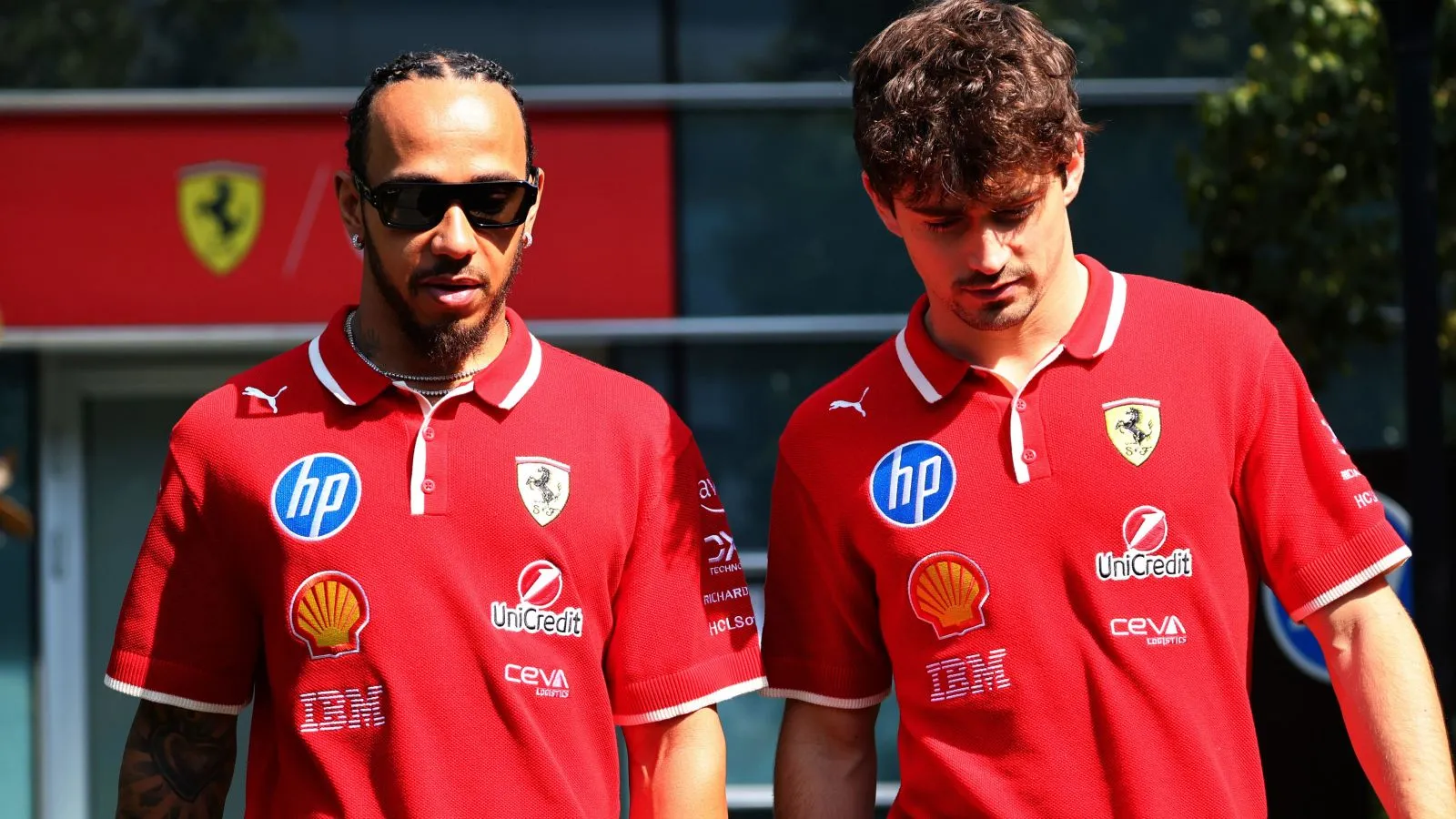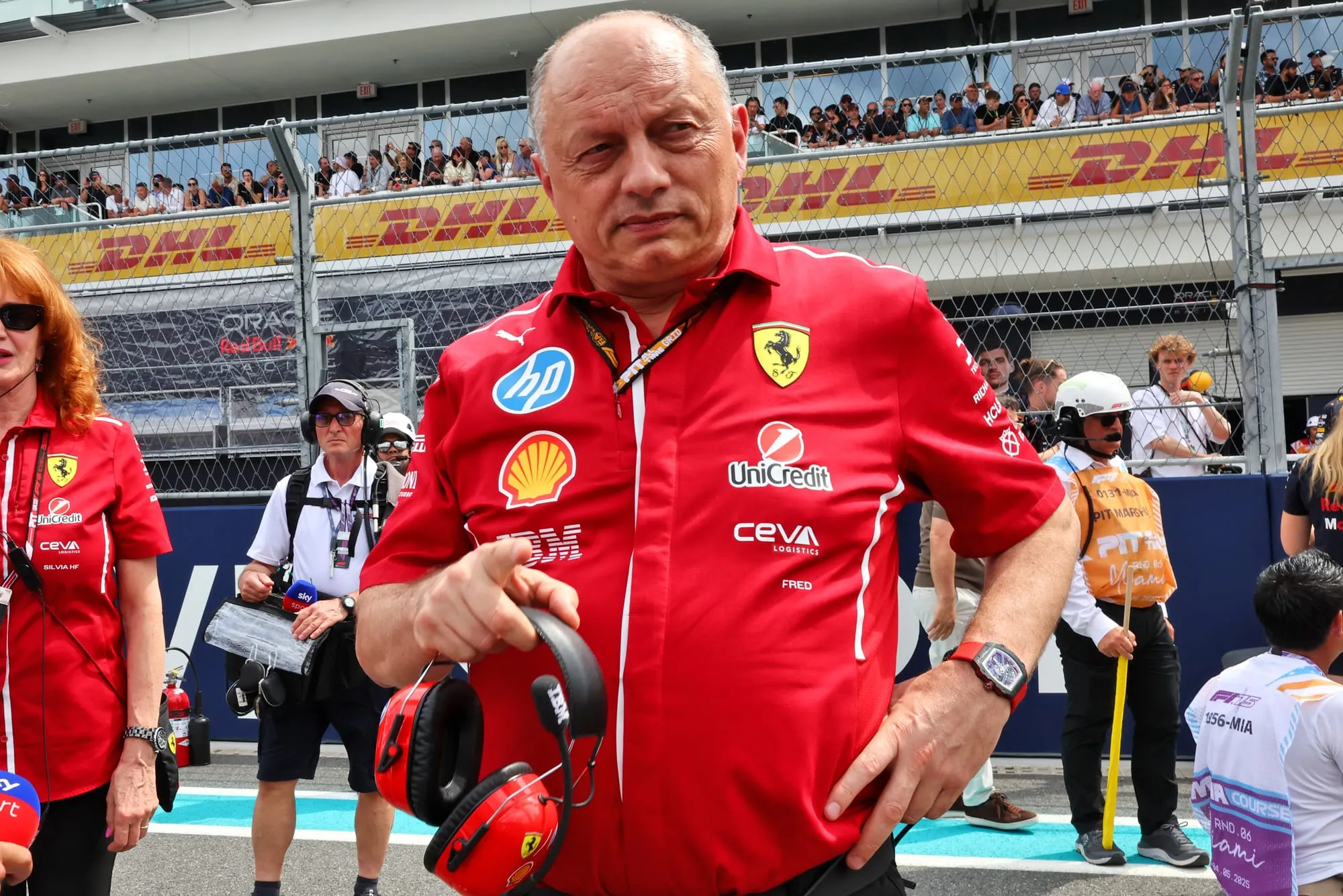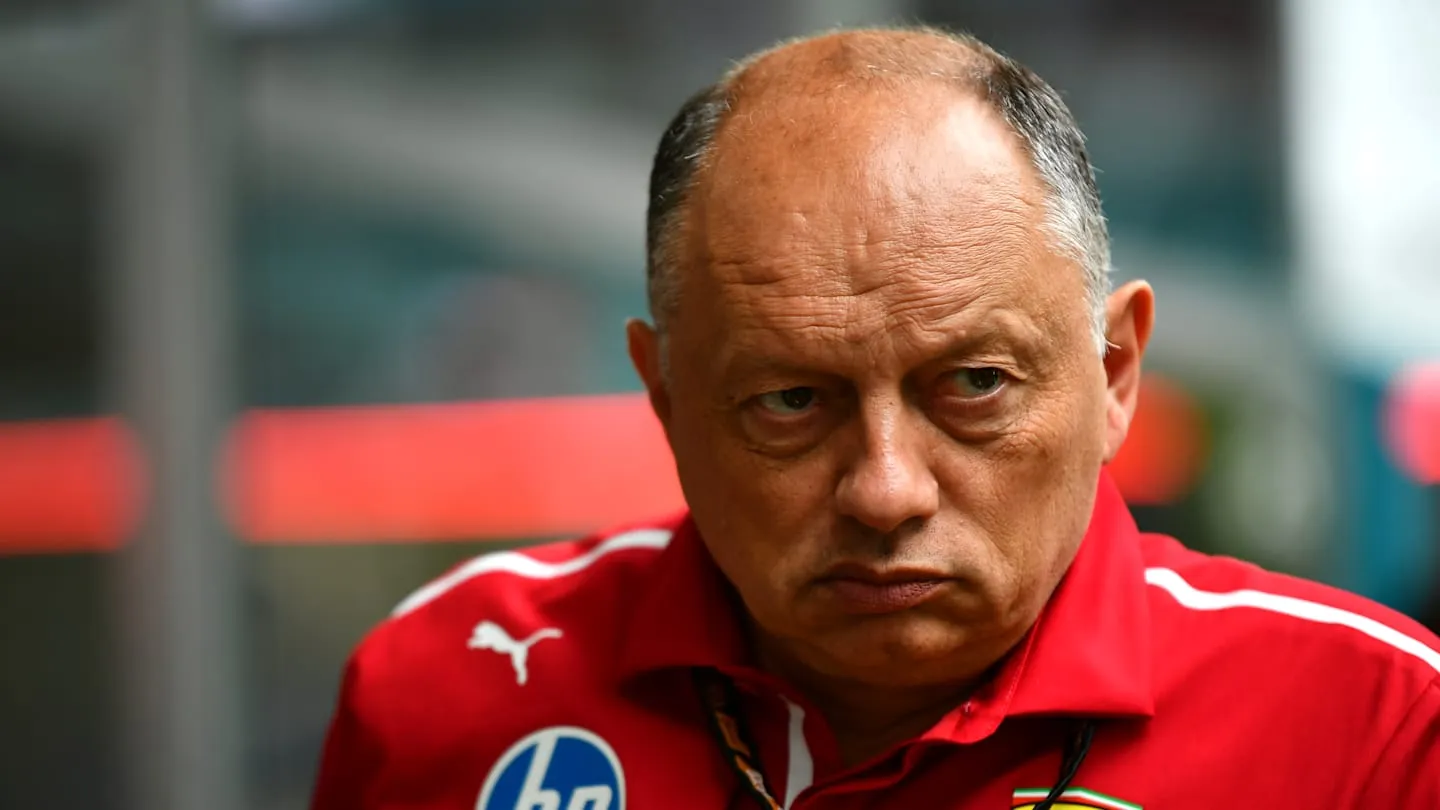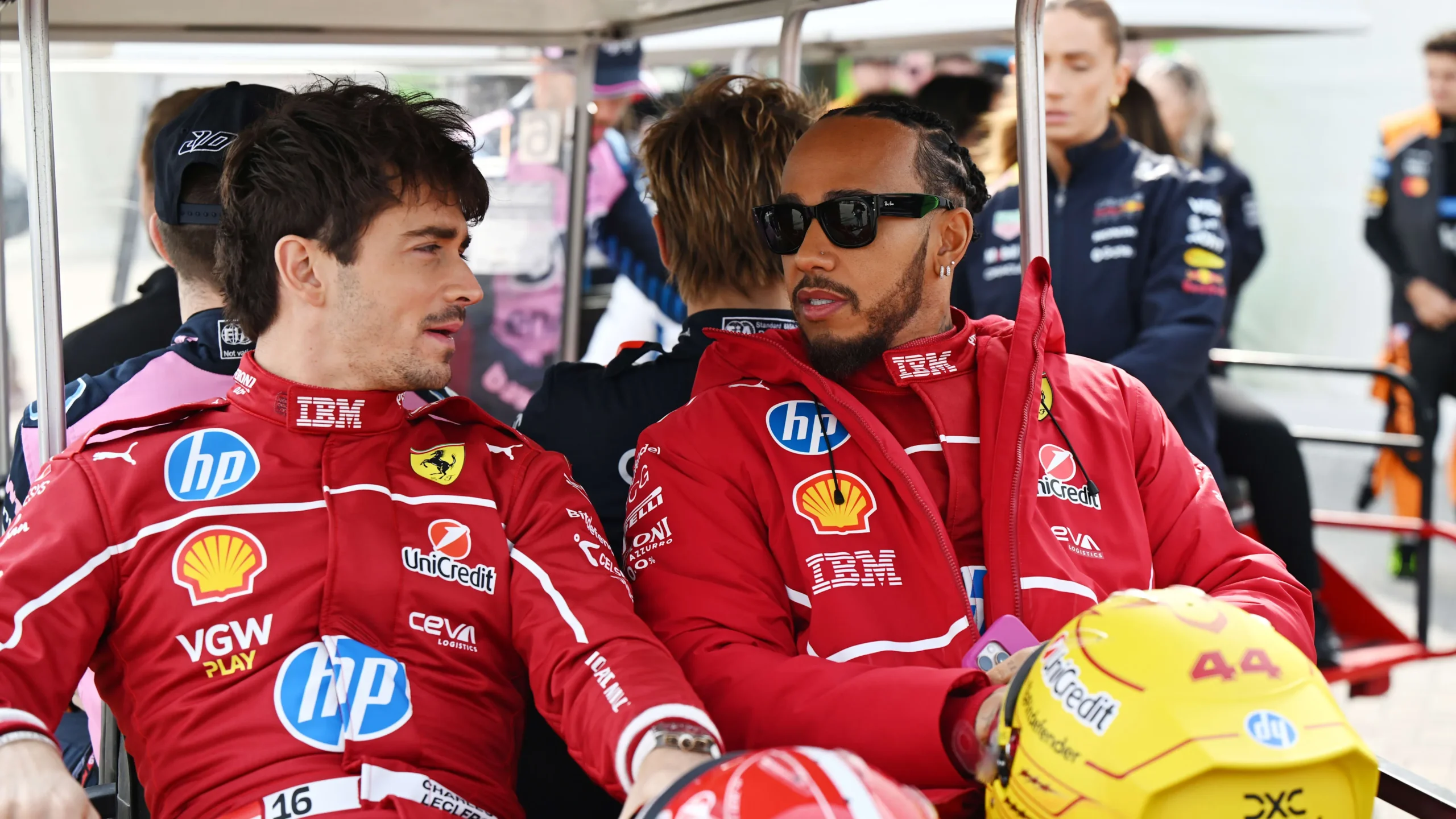Ferrari team principal Frederic Vasseur has addressed the growing controversy surrounding the team orders issued during the 2025 Formula 1 Miami Grand Prix. Despite criticism from both drivers Charles Leclerc and Lewis Hamilton, Vasseur has defended the decision, arguing that the team’s primary focus was ensuring Ferrari’s best interest — a “Ferrari first” mentality.

During the race, Ferrari made the strategic decision to swap the positions of Leclerc and Hamilton in a bid to maximize their chances of catching Mercedes’ Andrea Kimi Antonelli. The swap was intended to give Hamilton a shot at using his medium tires to close the gap and make a challenge for sixth place. However, despite initially narrowing the gap, Hamilton was unable to close it further and ultimately fell behind again.
The Tension Between Leclerc and Hamilton
Both Leclerc and Hamilton expressed their frustration with Ferrari’s tactics. Hamilton felt that the decision to swap positions came too late, and Leclerc was clearly uncomfortable with the situation, particularly considering how close his teammate Carlos Sainz was behind him.
Hamilton was candid in his criticism, acknowledging the team’s decision but suggesting that the delay in the swap hurt their chances. Meanwhile, Leclerc’s concerns were focused on the potential risks involved in losing track position to Sainz. It was a difficult pill to swallow for both drivers, who are naturally focused on their own championship goals.
Vasseur Explains the “Ferrari First” Approach
Despite the tensions, Vasseur stood by the team’s strategy, emphasizing that team orders were made with Ferrari’s overall objectives at the forefront. “We have a general policy and we follow the policy,” Vasseur explained. “The question is not to swap and to swap back if you don’t get the guy who is in front of you.”
The Ferrari team principal noted that at that stage of the race, the decision wasn’t about whether the drivers were fast enough, but rather if their performance was being boosted simply by the Drag Reduction System (DRS) effect. Vasseur admitted that it was not easy to make such decisions in real-time, especially when racing at the elite level where every millisecond counts.
“We are racing for Ferrari first,” Vasseur said. “Honestly, I think as a team, we did a good job.” While he acknowledged that there might be room for improvement in timing the swap, he insisted that the delay was a necessary part of the process to understand how the race was unfolding.

The Complexity of Real-Time Decision-Making
Vasseur took care to explain the intricacies involved in making real-time decisions from the pit wall, highlighting the difficulties in analyzing data during a high-speed race. He emphasized that the team was working with a complex set of factors, including tire performance, DRS assistance, and car setups, which made it tough to make the call immediately.
“The radio transmission, first we have to understand that it’s FOM who is managing the delay,” Vasseur elaborated. “Sometimes we are asking them something and you have it live half a lap later or one lap later.” He went on to explain that the team’s engineers were discussing a variety of variables at the same time, which added to the complexity of decision-making.
Although Vasseur conceded that it might have been ideal to make the call a bit earlier or later, he remained confident in the ultimate decision, saying, “We did the job.” In the fast-paced world of Formula 1, split-second decisions can be the difference between success and failure, and Vasseur stood by Ferrari’s actions, despite the friction it caused among the drivers.
Understanding the Drivers’ Frustration
Vasseur acknowledged the inherent frustration that comes with the team’s decision-making process, especially when it involves asking top-tier drivers like Hamilton and Leclerc to relinquish positions. He had a private conversation with Hamilton after the race, where he expressed understanding of the emotional side of the situation.
“They are champions,” Vasseur said. “They want to win races. We are asking them to let their teammates go. It’s not easy. It’s never easy.” Vasseur’s empathetic response demonstrated his awareness of the pressure that Ferrari’s drivers face when racing at the highest level.
Looking Ahead: Will Ferrari’s Strategy Be the Blueprint for Future Races?
As the season continues, Ferrari’s approach to team orders remains under scrutiny. While Vasseur’s decision to prioritize Ferrari’s team-first mentality is a point of contention for some, it’s clear that the team has placed a premium on maintaining internal harmony and strategic direction.

For now, Ferrari appears committed to making decisions that best serve the long-term interests of the team, even if those choices are difficult for individual drivers. How this policy will evolve as the season progresses remains to be seen, but one thing is clear: in the world of Formula 1, no decision is ever easy, and the balance between individual ambition and team objectives will always be a tightrope walk.

I am a writer with a passion for technology and gaming. I write about a variety of subjects, including Esports, Games, Shows, and Sports. I create engaging and informative content for Hiptoro.

